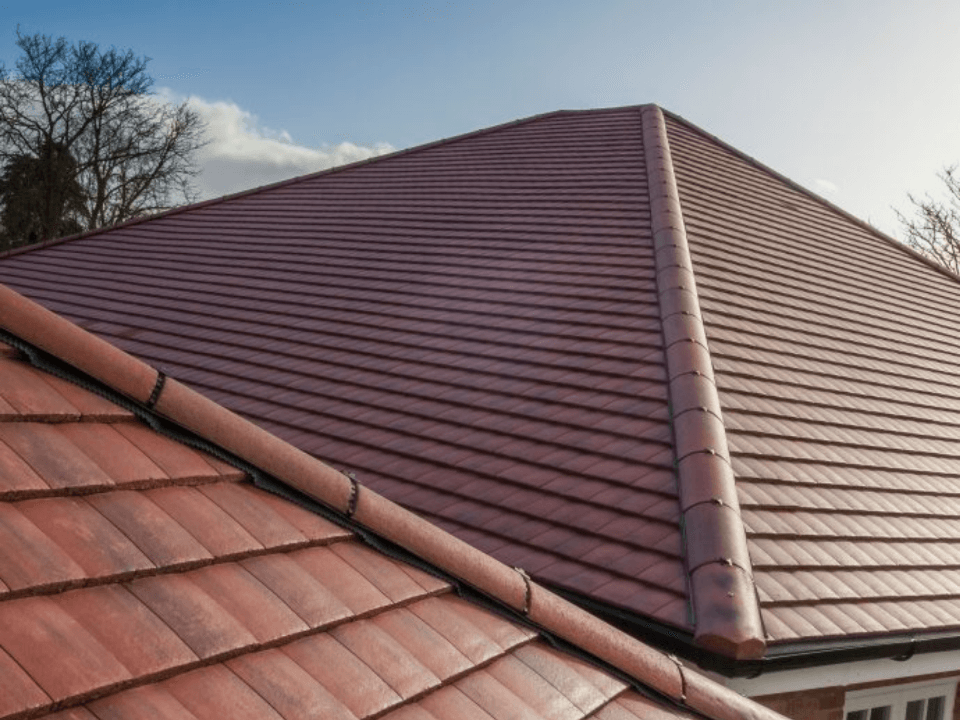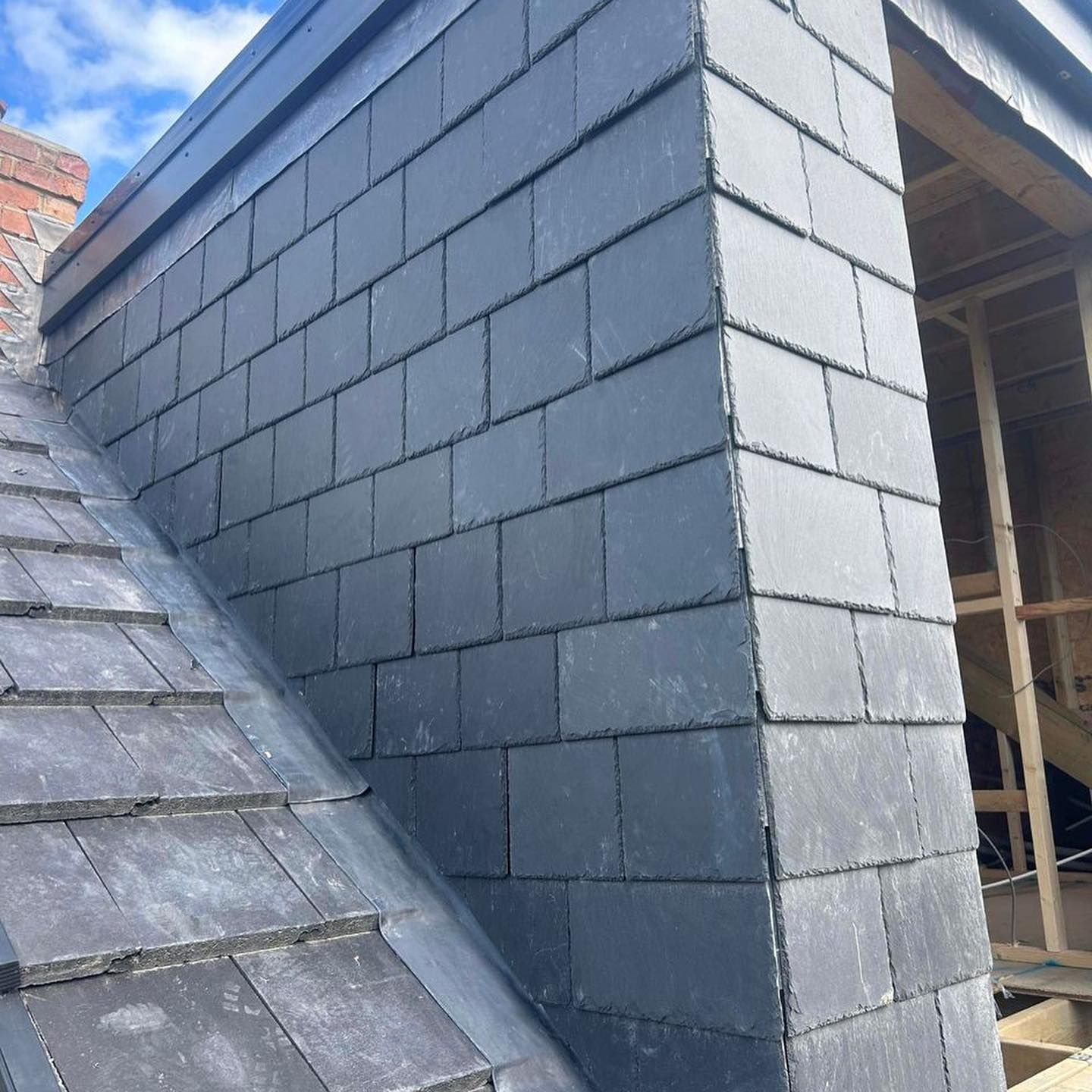Flat Roofs: A Comprehensive Guide for Property Owners
Roofers Glasgow advise If you're considering extending your Glasgow home or building from scratch, a flat roof installation might be a popular choice for you. To make a fully informed decision, it's important to understand the various options available and materials used, as well as the long-term benefits of having a flat roof installed.
In this comprehensive guide, we'll provide you with detailed advice on everything you need to know before investing in a flat roof for your property. We'll delve into the different types of flat roofs, including their costs, lifespan, and other important considerations to help you choose the best option for your specific needs. By the end of this post, you'll have a better understanding of flat roofs and be better equipped to make an informed decision for your Glasgow home.
What is a flat roof?
A flat roof is a roofing system that features a single, horizontal surface that has a slight pitch to allow for drainage. It's essential to remember that flat roofs aren't entirely level; instead, they have a slight angle or pitch to enable water to flow away from the building. Generally, any roof with a pitch of less than 10 degrees is classified as a flat roof.
Flat roofs are a popular choice for commercial and residential buildings due to their affordability, versatility, and modern aesthetic. However, they require regular maintenance and inspection to ensure that they remain structurally sound and free from leaks. It's crucial to hire a professional roofers in Glasgow with expertise in flat roof installation, repair, and maintenance to ensure your roof lasts for years to come.
What are the advantages of flat roofs
Flat roofs provide many advantages for residential applications, including ease of maintenance, cost-effectiveness, and durability compared to other roofing styles. They are particularly well-suited for buildings with limited space or large rooftop areas.
- One of the primary benefits of flat roofs is their simplicity of construction. This makes them an attractive option for those looking for a faster installation time without sacrificing quality. Flat roofs also tend to require less material than pitched roofs, resulting in significant savings on material costs and labour hours.
- Another advantage of flat roofs is their energy efficiency. They are easy to insulate, which helps reduce energy costs. Additionally, flat roofs can be designed with features such as skylights, rooftop gardens, or solar panels for environmental sustainability purposes. Flat roofs do not have valleys or crevices that could collect water and cause damage to the structure.
- Lastly, flat roofs offer improved architectural design potential. They are relatively simple and straightforward, allowing for easy customization with various materials, colours, and textures for a more aesthetically pleasing look. This offers architects and designers greater freedom to create unique and visually appealing residential or commercial buildings.
It is important to note that if you are planning on installing a flat roof, it is recommended to consult a professional roofers in Glasgow to ensure the design and installation meets the building codes and safety standards.
What are the different flat roof materials that are available?
When it comes to flat roofs, there are a variety of materials to choose from, each with its own set of benefits and drawbacks. Among the most common options are asphalt roll roofing, rubber membrane or modified bitumen, EPDM (ethylene propylene diene monomer) rubber, single ply membrane, TPO (thermoplastic polyolefin), PVC (polyvinyl chloride) membranes, and bitumen felt.
When choosing a flat roof material, it is important to consider the climate, building type, and budget to determine the most suitable option. Consulting a professional roofing contractor can also help ensure that the selected material meets the building codes and safety standards.
How much does it cost to install a flat roof in Glasgow
In Glasgow, the cost of installing a flat roof can vary greatly depending on the size and complexity of the project. For a small-to-medium sized flat roof, which is typically under 100m2, the cost can range from approximately £1,000 to £4,500. This price includes the cost of materials, labour, and any additional services, such as scaffolding or insulation.
For larger flat roofs that are greater than 100m2, the cost is likely to be significantly higher, with an average cost of £10,000 or more. The higher cost is primarily due to the increased amount of materials required and the higher labour costs associated with a larger project.
It is important to note that the actual cost of installing a flat roof can vary based on several factors, including the type of material used, the location of the building, and the complexity of the job. Additionally, any additional services or features, such as insulation or skylights, will also impact the overall cost.
To get an accurate estimate for a flat roof installation, it is recommended to consult with a professional roofing contractor in Glasgow who can assess the specific needs of the project and provide a detailed cost breakdown. It is important to choose a reputable contractor who can ensure that the installation meets building codes and safety standards.
How much does a flat roof repair cost in Glasgow?
Roofers Glasgow advise, the cost of repairing a flat roof can vary considerably depending on several factors, including the size, shape, and materials used. For small repairs, the cost typically ranges from around £200 to £2,000, while major works such as replacing an entire roofing system can cost up to £10,000.
The cost of the repair will depend on the extent of the damage, the type of material used, and the complexity of the repair job. For instance, repairing a small tear or crack in the roof can be a relatively simple and inexpensive fix, whereas replacing a large section of the roof due to extensive damage or wear and tear will require more labour and materials, and therefore be more costly.
It is important to note that the cost of repairing a flat roof can also be impacted by the location of the building and the availability of skilled professionals in the area. To get an accurate estimate for the cost of repairing a flat roof, it is recommended to consult with a reputable roofing contractor who can assess the extent of the damage and provide a detailed cost breakdown.
How long does a flat roof last?
The lifespan of a flat roof is dependent on several factors, including the quality of installation, materials used, and the level of maintenance it receives. Generally speaking, a well-installed and high-quality flat roof can last between 20 to 30 years, while a lower quality one may only last 5 to 10 years. However, it is important to note that regular inspections and maintenance can help to extend the life expectancy of a flat roof beyond these estimates, while neglecting its condition could lead to unexpected replacement much sooner than anticipated.
Factors that can affect the lifespan of a flat roof include exposure to the elements, foot traffic, and drainage systems. For instance, a flat roof that is frequently exposed to harsh weather conditions or heavy foot traffic may require more frequent maintenance and repairs to aid longevity
What are popular faults with flat roofs?
Flat roofs can be prone to several common issues due to their design and construction. One of the most common issues is ponding water, which occurs when the roof is unable to drain rainwater quickly, leading to stagnant pools of water. This can result in leaks and structural damage if left unaddressed. Another common issue is cracking of the roof membrane, which can allow moisture to penetrate and weaken the roof structure over time. Flat roofs are also highly susceptible to UV damage from direct sunlight, which can cause material deterioration or discoloration. To prevent further damage or costly repairs, it's important to address these issues promptly.
How to maintain a flat roof correctly
To ensure the longevity and performance of your flat roof, proper maintenance is crucial. Regular inspections should be conducted to detect any issues before they escalate into larger problems. These inspections should include checking for cracks or splits in the roofing membrane, identifying areas of ponding water, and examining flashings at penetrations.
Debris such as leaves, branches, twigs, and dirt can accumulate on the roof's surface and cause damage to the membrane, so it's important to regularly remove them. It is recommended to use a soft-bristled broom or leaf blower to avoid damaging the membrane.
If there are trees near the building, it is necessary to trim them back regularly to keep branches and leaves away from the flat roof. Branches can scratch or damage the membrane if they come into contact with it, making tree maintenance an important preventative measure.
It is also important to check for any blockages in the flat roof drainage system, as these can cause leaks over time. By addressing these issues promptly, you can avoid costly repairs and ensure that your flat roof will last for many years to come.
How to know if a flat roof is right for your building?
When choosing between a flat or pitched roof for your property, it's important to consider several factors, including your property's architecture, climate conditions, and intended use. Your local planning department may also have specific requirements regarding the type of roof you can install, so it's important to check with them before making any decisions.
In addition, the exposure of your property can also impact the suitability of a flat roof. Flat roofs may not be as durable as pitched roofs and can be more susceptible to damage from strong winds, heavy rain, or snowfall. Therefore, the location of your property is an important factor to consider.
Another consideration is the maintenance costs associated with each type of roof. Generally, flat roofs require more frequent maintenance than pitched roofs, although the initial construction costs are typically lower. It's important to discuss maintenance costs with your local roofers in Glasgow to fully understand the long-term cost implications of your decision.
Conclusion
In order to make an informed decision about installing a flat roof on your home, it's important to consider the various materials available and their advantages and disadvantages. Factors such as insulation requirements, weight-bearing capacity, weather exposure, installation processes, and budget should also be taken into account.
Once you have weighed all the relevant factors, your next step is to find a certified roofing contractor who can assist you with the installation or repair of your new flat roof. If you reside in Glasgow or the surrounding area, our team at Roofers Glasgow can provide assistance. We will ensure that your flat roof is installed correctly, allowing you to reap all of the benefits associated with this roofing option. Check our
homepage
for an overview of our services.
You might also like


